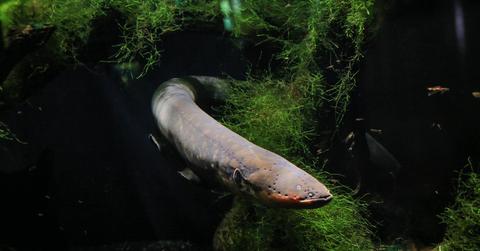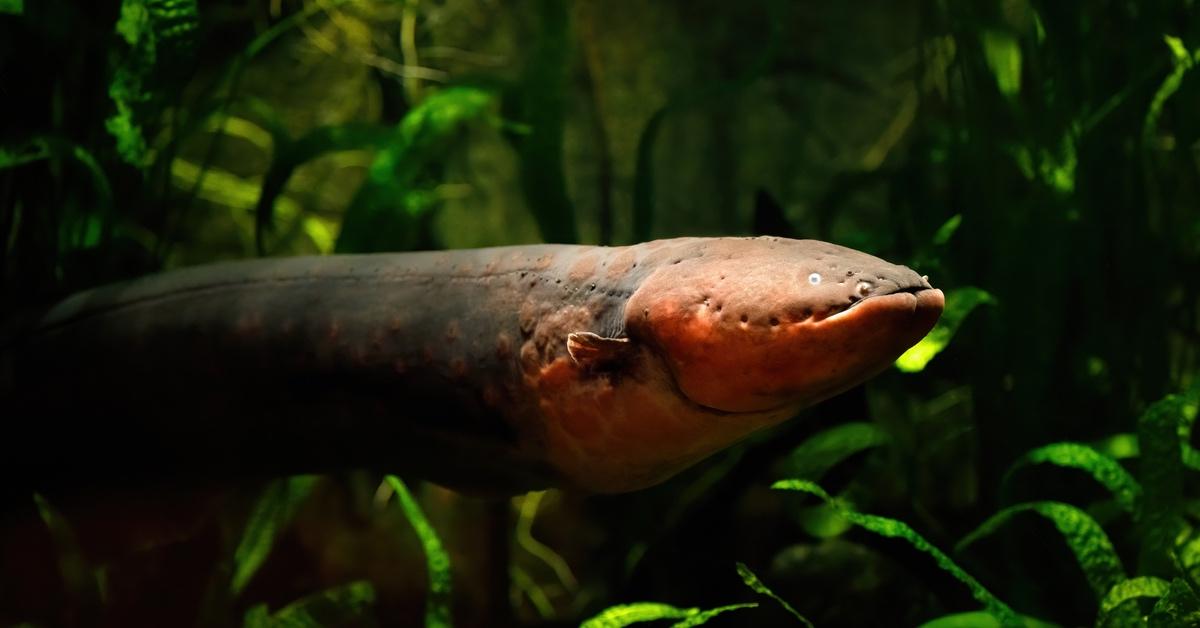Study Reveals That Electric Eels Can Actually Change DNA of Other Animals With Their Shock
Published Dec. 11 2023, 5:04 p.m. ET

The Gist:
Electric eels are not eels, but a slender fish called a knifefish.
Electric can produce electricity using electrolytes, which they use to attack prey and communicate.
A study revealed that electric eels may be able to modify the DNA of other marine animals in its shock.
Here's a fun fact for you: electric eels aren't actually "eels" at all. That’s right; an electric eel is truly a long serpentine fish named because it looks like an eel. Despite being an imposter in the eel family, electric eels have the unique ability to produce a high-voltage shock through their organs, which helps them do things like communicate and stun their prey.
An animal producing an electric current is mystifying, to say the least. So, how do electric eels work? Plus, dive inside the cool science that researchers are just beginning to learn about these incredible fish.

How do electric eels work?
Electric eels are actually knifefish, similar to catfish or carp, and so named because they don't have a dorsal fin. Unlike regular eels, electric eels are found in freshwater as opposed to salt.
According to the National Aquarium, electric eels have "a special mucous membrane in their mouth" which helps them absorb oxygen from the air.
The reason electric eels have the unique ability to produce a shock is because they are mostly blind, and rely on the pulses to explore their surroundings — not unlike how other animals use echolocation. They can use higher voltages for things like protecting themselves from predators or killing their prey, per the National Aquarium.
Interestingly, the body of an electric eel consists mostly of three electric organs.
Electric eels can produce a shock thanks to these organs: the Sachs’ organ, the Hunter’s organ, and the Main organ. Each of the organs contains electrolytes, and when the electric eel is under threat its nervous system sends a signal to the electrolytes. The electrolytes then release all at once, which creates an electrical current, per the University of Western Australia. Only one-fifth of the eel's body is left for vital organs!

A study suggests that electric eels shock DNA into other animals.
Researchers at Nagoya University in Japan suggest that electric eels could be performing electroporation, which is when high-voltage pulses can temporarily break the cell membrane's barrier to allow DNA or other proteins into cells. So, when electric eels create an electric pulse, the creatures around them could be recipients of DNA floating around in the environment at the time, better known as "environmental DNA."
According to Forbes, co-research leads Eiichi Hondo and Atsuo Iida, professors of bioagricultural science, tested this theory between an electric eel and a zebrafish. They found that an electric eel could pass DNA onto the zebrafish by performing an experiment in which both creatures were introduced to a DNA-solution-treated enclosure. Then, eels were prompted with food to produce a shock. If the zebrafish picked up eel DNA, they would glow green — and they did!
Although the research regarding electric eels' effect on nature is still developing, electroporation already happens in some places, per Earth.com. In particular, when lightning strikes, the electric charge can charge the genes of soil bacteria.
Still, the prospect that electric eels could genetically modify freshwater ecosystems is fascinating and a reminder of how complex ecosystems exist all around us!